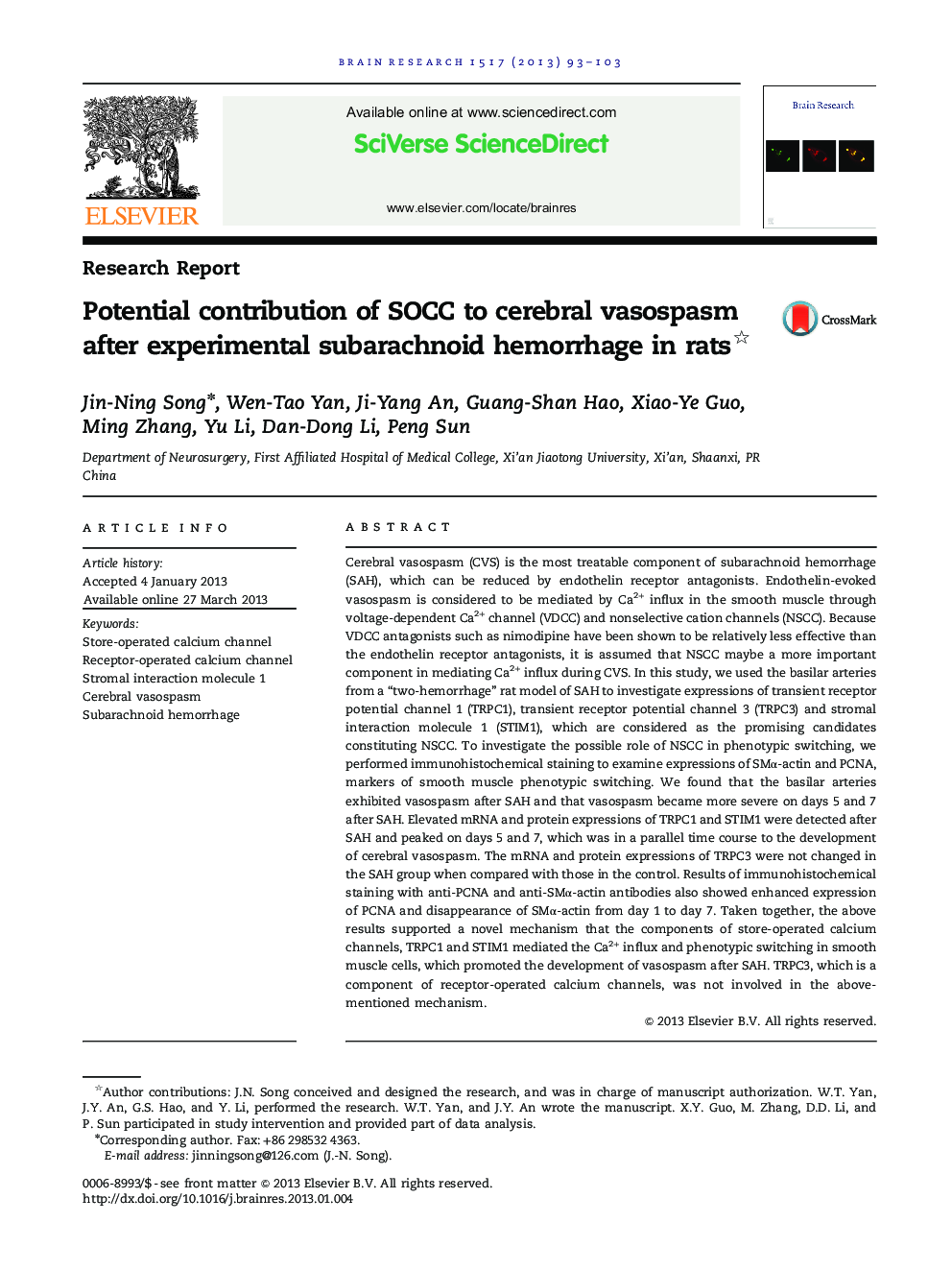| کد مقاله | کد نشریه | سال انتشار | مقاله انگلیسی | نسخه تمام متن |
|---|---|---|---|---|
| 6263848 | 1613922 | 2013 | 11 صفحه PDF | دانلود رایگان |

- Notably high TRPC1 and Stim1 expression in vasospastic bailar arteries after SAH.
- TRPC3 expression does not change in vasospastic bailar arteries after SAH.
- Time course of SMCs phenotypic switch and SOCC expression in vasospastic basilar arteries are paralleled.
Cerebral vasospasm (CVS) is the most treatable component of subarachnoid hemorrhage (SAH), which can be reduced by endothelin receptor antagonists. Endothelin-evoked vasospasm is considered to be mediated by Ca2+ influx in the smooth muscle through voltage-dependent Ca2+ channel (VDCC) and nonselective cation channels (NSCC). Because VDCC antagonists such as nimodipine have been shown to be relatively less effective than the endothelin receptor antagonists, it is assumed that NSCC maybe a more important component in mediating Ca2+ influx during CVS. In this study, we used the basilar arteries from a “two-hemorrhage” rat model of SAH to investigate expressions of transient receptor potential channel 1 (TRPC1), transient receptor potential channel 3 (TRPC3) and stromal interaction molecule 1 (STIM1), which are considered as the promising candidates constituting NSCC. To investigate the possible role of NSCC in phenotypic switching, we performed immunohistochemical staining to examine expressions of SMα-actin and PCNA, markers of smooth muscle phenotypic switching. We found that the basilar arteries exhibited vasospasm after SAH and that vasospasm became more severe on days 5 and 7 after SAH. Elevated mRNA and protein expressions of TRPC1 and STIM1 were detected after SAH and peaked on days 5 and 7, which was in a parallel time course to the development of cerebral vasospasm. The mRNA and protein expressions of TRPC3 were not changed in the SAH group when compared with those in the control. Results of immunohistochemical staining with anti-PCNA and anti-SMα-actin antibodies also showed enhanced expression of PCNA and disappearance of SMα-actin from day 1 to day 7. Taken together, the above results supported a novel mechanism that the components of store-operated calcium channels, TRPC1 and STIM1 mediated the Ca2+ influx and phenotypic switching in smooth muscle cells, which promoted the development of vasospasm after SAH. TRPC3, which is a component of receptor-operated calcium channels, was not involved in the above-mentioned mechanism.
Journal: Brain Research - Volume 1517, 23 June 2013, Pages 93-103